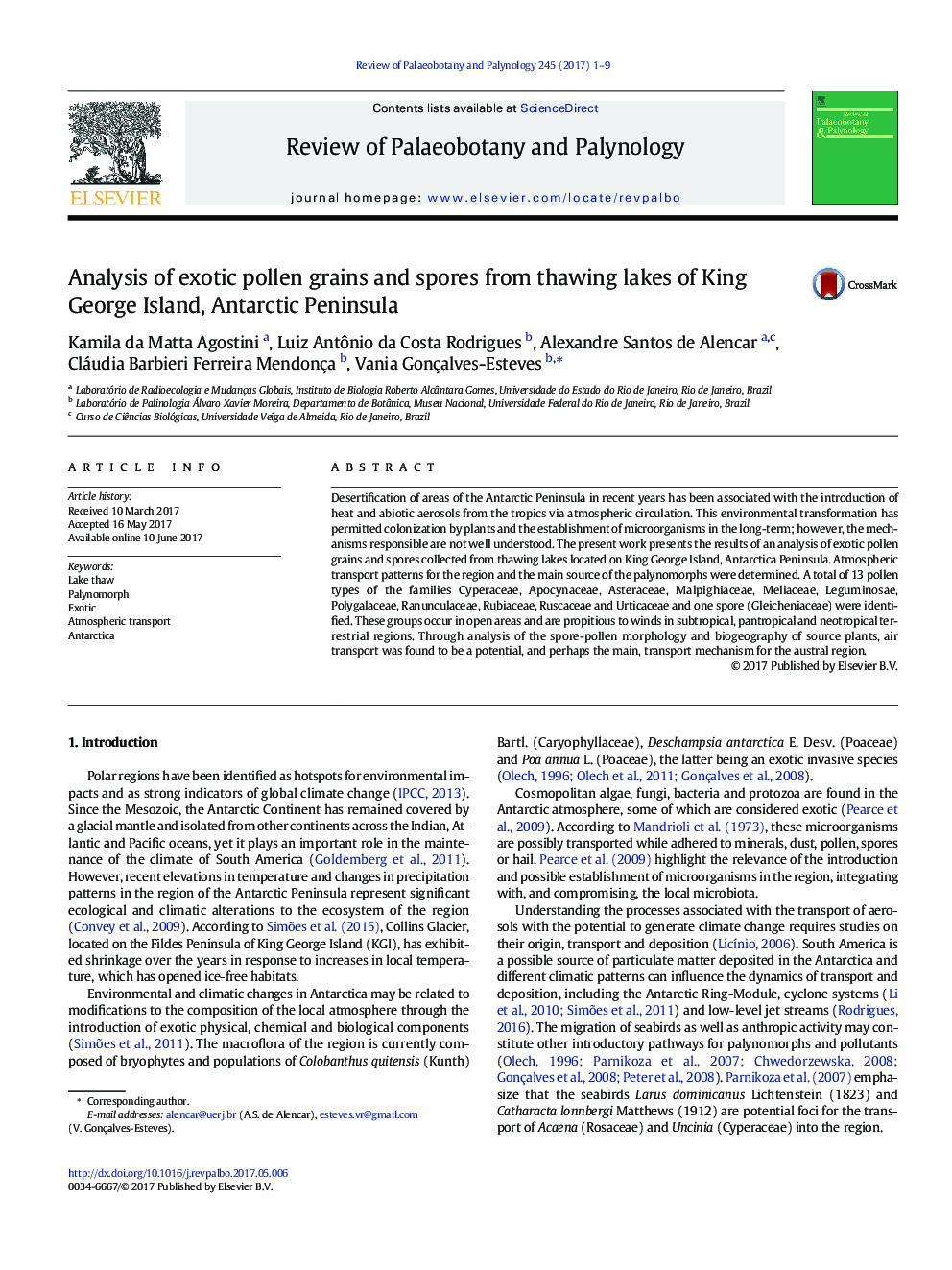| Article ID | Journal | Published Year | Pages | File Type |
|---|---|---|---|---|
| 5788332 | Review of Palaeobotany and Palynology | 2017 | 9 Pages |
Abstract
Desertification of areas of the Antarctic Peninsula in recent years has been associated with the introduction of heat and abiotic aerosols from the tropics via atmospheric circulation. This environmental transformation has permitted colonization by plants and the establishment of microorganisms in the long-term; however, the mechanisms responsible are not well understood. The present work presents the results of an analysis of exotic pollen grains and spores collected from thawing lakes located on King George Island, Antarctica Peninsula. Atmospheric transport patterns for the region and the main source of the palynomorphs were determined. A total of 13 pollen types of the families Cyperaceae, Apocynaceae, Asteraceae, Malpighiaceae, Meliaceae, Leguminosae, Polygalaceae, Ranunculaceae, Rubiaceae, Ruscaceae and Urticaceae and one spore (Gleicheniaceae) were identified. These groups occur in open areas and are propitious to winds in subtropical, pantropical and neotropical terrestrial regions. Through analysis of the spore-pollen morphology and biogeography of source plants, air transport was found to be a potential, and perhaps the main, transport mechanism for the austral region.
Related Topics
Physical Sciences and Engineering
Earth and Planetary Sciences
Palaeontology
Authors
Kamila da Matta Agostini, Luiz Antônio da Costa Rodrigues, Alexandre Santos de Alencar, Cláudia Barbieri Ferreira Mendonça, Vania Gonçalves-Esteves,
